Difference between revisions of "Looseness"
m |
|||
| Line 4: | Line 4: | ||
| − | == | + | ==Looseness - Loose grain leather== |
If the grain layer of the leather is of irregular thickness and density, it is called Looseness of leather or loose grain leather. Fibres in normal leather are very closely knit making it virtually impossible to see any gaps or weaknesses. However, on a heavily affected leather, the looseness is so pronounced that the leather surface can be separated from the lower leather layers by using your finger and they tend to get a very wrinkly appearance when folded. | If the grain layer of the leather is of irregular thickness and density, it is called Looseness of leather or loose grain leather. Fibres in normal leather are very closely knit making it virtually impossible to see any gaps or weaknesses. However, on a heavily affected leather, the looseness is so pronounced that the leather surface can be separated from the lower leather layers by using your finger and they tend to get a very wrinkly appearance when folded. | ||
| Line 33: | Line 33: | ||
</p> | </p> | ||
<p align=center> | <p align=center> | ||
| − | ''Typical cases of | + | ''Typical cases of looseness.''</p> |
| Line 41: | Line 41: | ||
</p> | </p> | ||
<p align=center> | <p align=center> | ||
| − | '' | + | ''Looseness is not necessarily distributed throughout the complete skin.''</p> |
Revision as of 16:59, 12 February 2017
Looseness - Loose grain leather
If the grain layer of the leather is of irregular thickness and density, it is called Looseness of leather or loose grain leather. Fibres in normal leather are very closely knit making it virtually impossible to see any gaps or weaknesses. However, on a heavily affected leather, the looseness is so pronounced that the leather surface can be separated from the lower leather layers by using your finger and they tend to get a very wrinkly appearance when folded.
The causes for this are mainly fat deposits in the animal skin, which dissolve during tanning and leave cavities. The hides of sheep and lamb are particularly susceptible to looseness.
In case of loose-grain leathers, the fibre braid is loose under the grain layer. Cow leather pulled apart with fingernail.
cow leather can also be affected. Normally, such hides are sorted out in production. Reasons for the loose grain of bovine leather are the nutrition (fatty fodder) or an interruption of the cooling process of the untanned skin. The fat in the skin then spoils and weakens the fibres. Certain breeds of cattle are more prone to this phenomenon. For e.g. crossroads are more susceptible.
The main problem with bovine leather is the "loose-grained effect". This occurs when the applied colour layer (pigmentation) is firmer than the leather underneath. The colour layer floats on the soft leather layer causing unwanted wrinkles to appear.
Typical cases of looseness.
Looseness is not necessarily distributed throughout the complete skin.
Both cross-sections are from the same skin. The different fibre structures are easy to recognize. The loose grain is in the region of the thicker fibre bundles.
This car head support shows very different wrinkles within a small area. The leather is more loose in the margins. With a headrest, this is not necessarily a quality deficiency.
Additional information








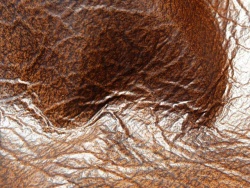
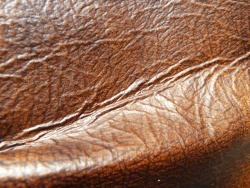
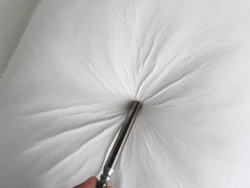
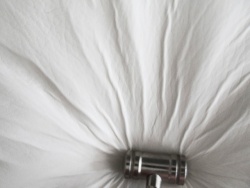
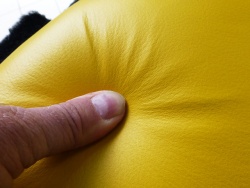
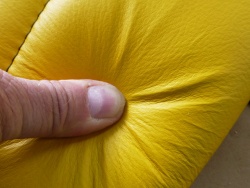







 a kotori web solution
a kotori web solution